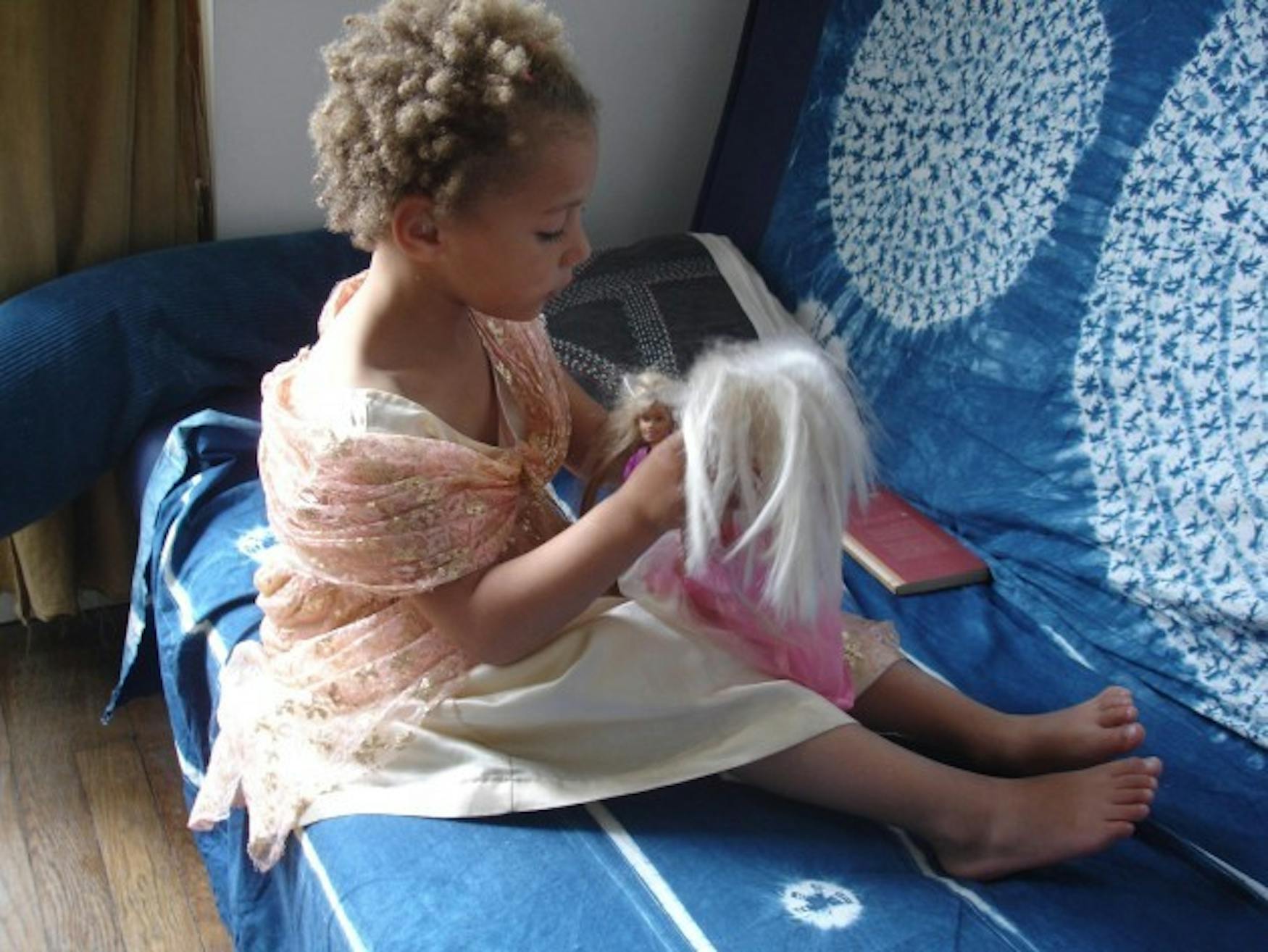Documentary reveals young girl's reality
Imagine seeing the world through the eyes of a three-year-old girl-and not just any three-year-old girl but through the eyes of Vera Loumpet-Galitzine, a girl who has grown up in France with a father who is the nje, or prince, of the Bamun kingdom in Foumbaun, Cameroon, and with a mother who is a descendent of a royal Russian lineage. She is a lively girl with an expansive imagination, a strong sense of self and an adventurous drive to explore her world.
Seeing the world through the innocent but perceptive eyes of Vera is what students and faculty experienced on Thursday night, as they watched Becoming Vera, a documentary directed by Mieke Bal, a Dutch cultural theorist and artist. Bal then gave her lecture titled "Resisting Resistance: Identity Politics Revisited" in conjunction with the film.
The event was part of the series Art and Gender: Global Perspectives, which is funded by the Brandeis Arts Council and the Women's and Gender Studies program.
Prof. Peter Kalb (FA) sat front and center, next to Judith Wechsler, a professor in the fine arts department at Tufts University. Many students and faculty from other universities attended, in addition to members of the Brandeis community. Prof. Aida Yuen Wong (FA) was also in attendance.Last semester she gave a talk for the Art and Gender lecture series, titled "Shaping Female Beauty in East Asian Societies."
In her film, Bal explores themes of identity and belonging by tracing the experiences of three-year-old Vera. At the beginning of the film, the young girl finds herself in a traditional Bamun ceremony in her honor, as she is the oldest daughter of the nje.
She visits Moscow and the estate where her mother's ancestors lived. She takes ballet lessons in Paris and attends a dance class in Cameroon. She talks constantly throughout-making up and telling stories and engaging with everybody around her.
Bal said that the film is about a child becoming the person she is-becoming Vera-through many different experiences and understanding and exposure to her complex heritage.
Bal suggested, however, in the question-and-answer session after the screening, that Vera's identity is not fragmented. Rather, she has a cohesive identity that is uniquely comprised of her different heritages and experiences. "Becoming Vera is the child's way of negotiating boarders that adults erect around her," Bal told the audience in her lecture.
Bal's lecture was in essence a close reading of both the film and the little girl's actions and speech, in an effort to reconcile how the audience began to understand her identity. Bal noted that the film is not a biography however. Becoming Vera is not about telling Vera's story. For Bal, the documentary was more about an investigation into the way culture shapes identity-and she does this by immersing Vera into artificial situations and seeing how she will react.
Bal openly admits, though, to the fact that she put Vera in situations in which she would never have been if not for the documentary.
Interestingly enough, the film's plot progression is not linear. It jumps from place to place, season to season, during a time span of one year-Vera's third year of life.
Kalb noted this lack of a linear structure in a question directed at Bal after the screening. Bal said in response to his claim that the film presents an attempt to allow the audience to imagine what Vera also sees, thinks and imagines.
Vera will not remember these events chronologically-as memory is not chronological, the viewer should not experience them in a chronological fashion.
The film is simply a melding of experience to create a story, and ultimately it shows how an identity is made.
The film and lecture presented an opportunity to examine constantly discussed themes of culture and identity through a new kind of gaze-in this case, the gaze of Vera.
*



Please note All comments are eligible for publication in The Justice.